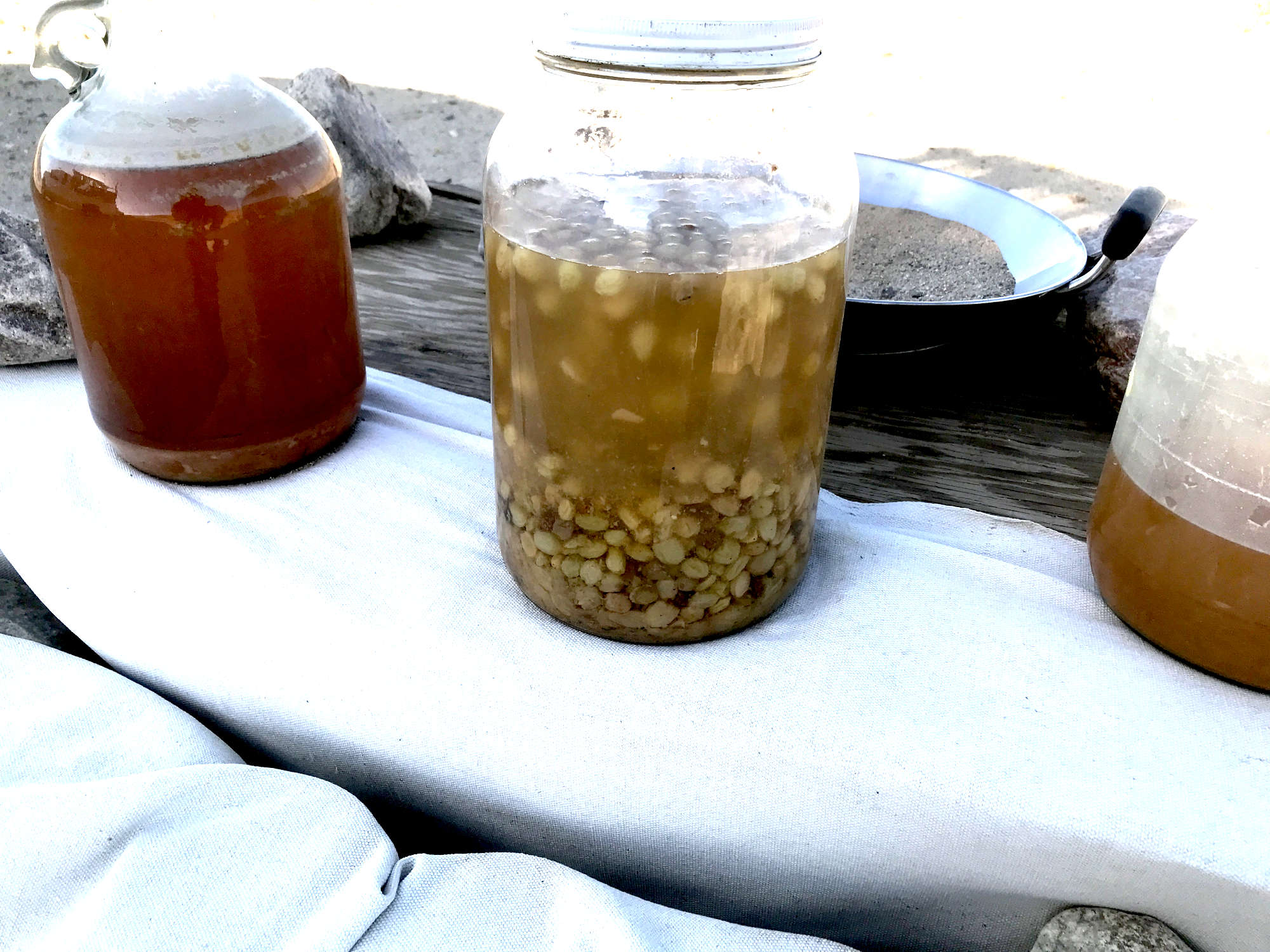
Brewing Raisin Wine with a One-Gallon Fermentation Jar
After several years of success with home brewing various fruit ciders and honey mead wines, I started to experiment with fermenting raisins. After all, most wines are just different kinds of grapes, and raisins are simply dried grapes, so why not try it? I was pleasantly surprised how well the first batch turned out. After straining out the liquid, I almost couldn't tell the difference between an average bottle of wine, and this raisin wine experiment. The the real fun began, the spent fermented raisins, now re- hydrated were a treat, though of course much less sweet.
I was so happy with the result I decided to phase out my honey mead wine making practice, at least until I eventually am able to take care of bees and have a local on-site source of honey. Not only will I save money this way, but I'll also save on packaging waste because I buy raisins by the 25 pound box and the honey would be in small containers so I can space out and pace the budgeting of them. I'd sadly end up with a lot of plastic containers I couldn't do much with. I'm not opposed to finding smaller quantities of honey in glass jars that I could easily re-purpose and reuse once empty, though I figured I may as well just call it a good on of several years of mead making.
My new brewing adventure in the summer months where it's easier to keep populations of yeast flourishing, is to keep 2 separate one-gallon glass jars of raisins fermenting at the same time, one a few days behind the other. So far it's been the perfectly balanced cycle of leaving the last remaining half inch or so of raisins and surrounding liquid after harvesting the rest, then refilling the jar about half way with raisins, then pouring water over them leaving about 25% of air space at the top.
Over the next several days I'll be having a nightly snack on about one cup's worth of the spent raisins, and along the way be filtering and straining out the liquid for long term storage in other glass jugs. While I'm doing this, the fresh batch is fermenting slowly at first, then at a frenzied pace. It starts off with all of the raisins totally submerged in the water, with only a few bubbles coming up, then within a day or two, most of the raisins are floating and crowded at the top with a roar of bubbles propping them up. I used to be very orthodox with using carboy airlocks, however I've decided over time that because they're just another breakable plastic part to have to replace over and over in these rugged conditions, I'd be willing to push the limits of experimentation with simply allowing a bit of airflow through a not fully tightened lid. So far I've had no issues with any insect or microbe contamination that led to negative effects, off-flavors, or anything else of concern. However, I can only recommend to others that you follow orthodox health and safety instructions for any fermentation process.
I'm personally very happy to have use the process of elimination to get down to the cheapest, easiest, most elegant and simplistic sustainable methodology. Whereas I was typically using a whole new packet of yeast per batch of mead, in this more cyclical method, it's more like perennial permaculture gardening. If I'm lucky and I have the extra jars by next winter, I may be able to even sustain this repeated cycle. Ideally I'll be maintaining the original yeast lineage throughout the coldest months when they grow the slowest and are more difficult to get up and running.